Affiliate links on Android Authority may earn us a commission. Learn more.
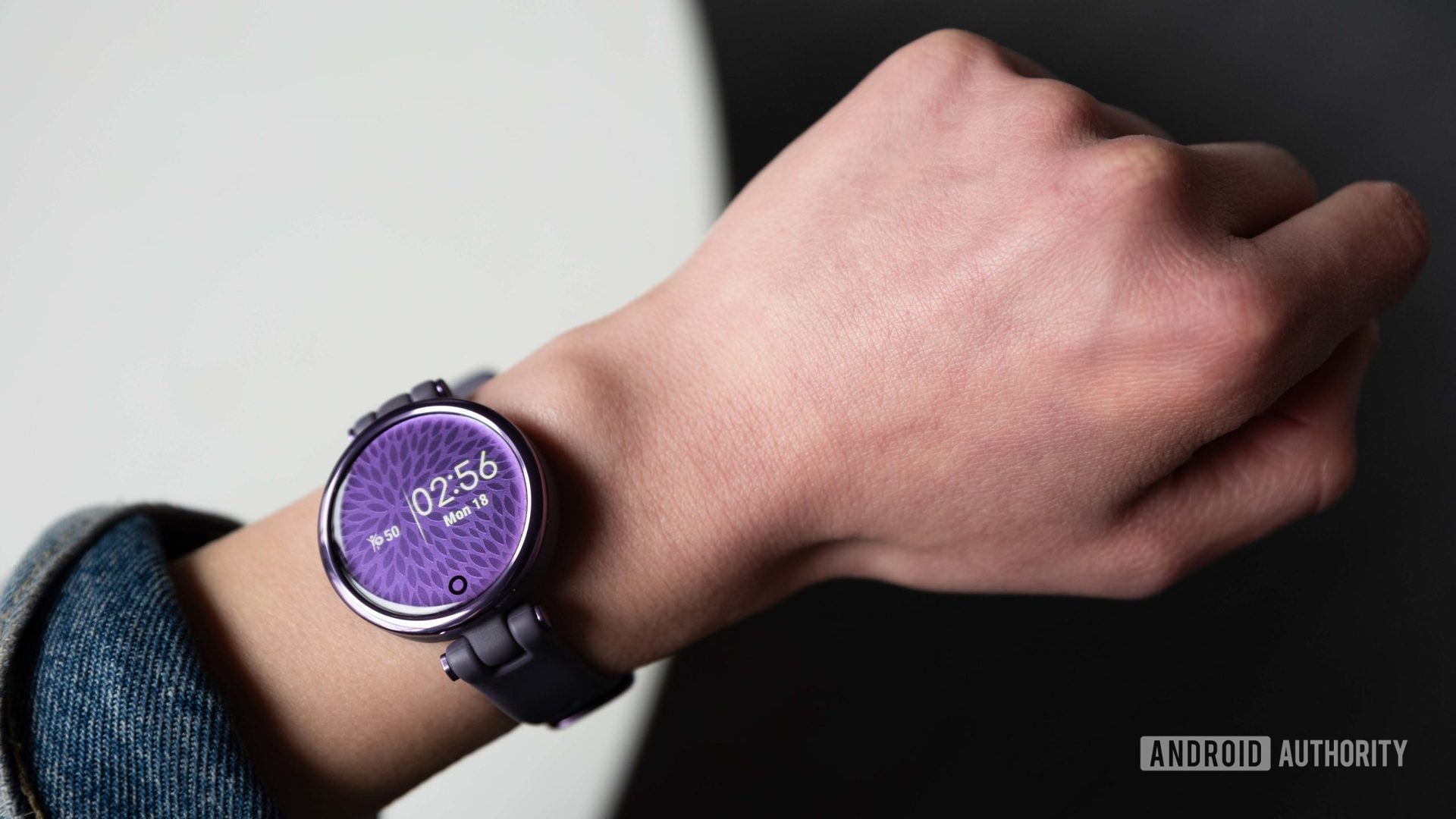
Garmin Lily review: This wearable for women has the basics
March 29, 2023
Garmin Lily
What we like
What we don't like
Garmin Lily
Despite multiple size offerings from popular brands, there is still a significant lack of smartwatches for those with smaller wrists. To appease the problem, Garmin launched the Garmin Lily. The Lily is a capable fitness tracker — and a pretty one at that. However, it oftentimes left us wanting a bit more. Read our full Garmin Lily review to find out why.
Update, March 2023: We’ve updated our Garmin Lily review with an updated list of alternatives, pricing, and more.
What you need to know about the Garmin Lily
The Garmin Lily smartwatch borrows many of the brand’s staple fitness tracking features from the Vivoactive 4 and Vivosmart 4 lines. It’s fairly economical compared to the competition affording basics like heart rate tracking, weather readings, and activity metrics. Outdoor enthusiasts may need a dedicated Garmin watch from the company’s adventure lines, but casual gym-goers will gravitate to the Garmin Lily.
Garmin offers two Lily variants: the Lily Sport Edition and Lily Classic Edition. Depending on your style and needs, the Garmin Lily can complement formal attire, accompany you to the gym, or both. While the Lily is marketed toward women, cisgender or otherwise, it’s great for anyone with slim wrists and a predilection for small timepieces.
The Garmin Lily is available from Garmin or third-party retailers like Amazon. You can purchase a Lily Sport Edition for $199 or a Lily Classic Edition for $249.
Hardware and design
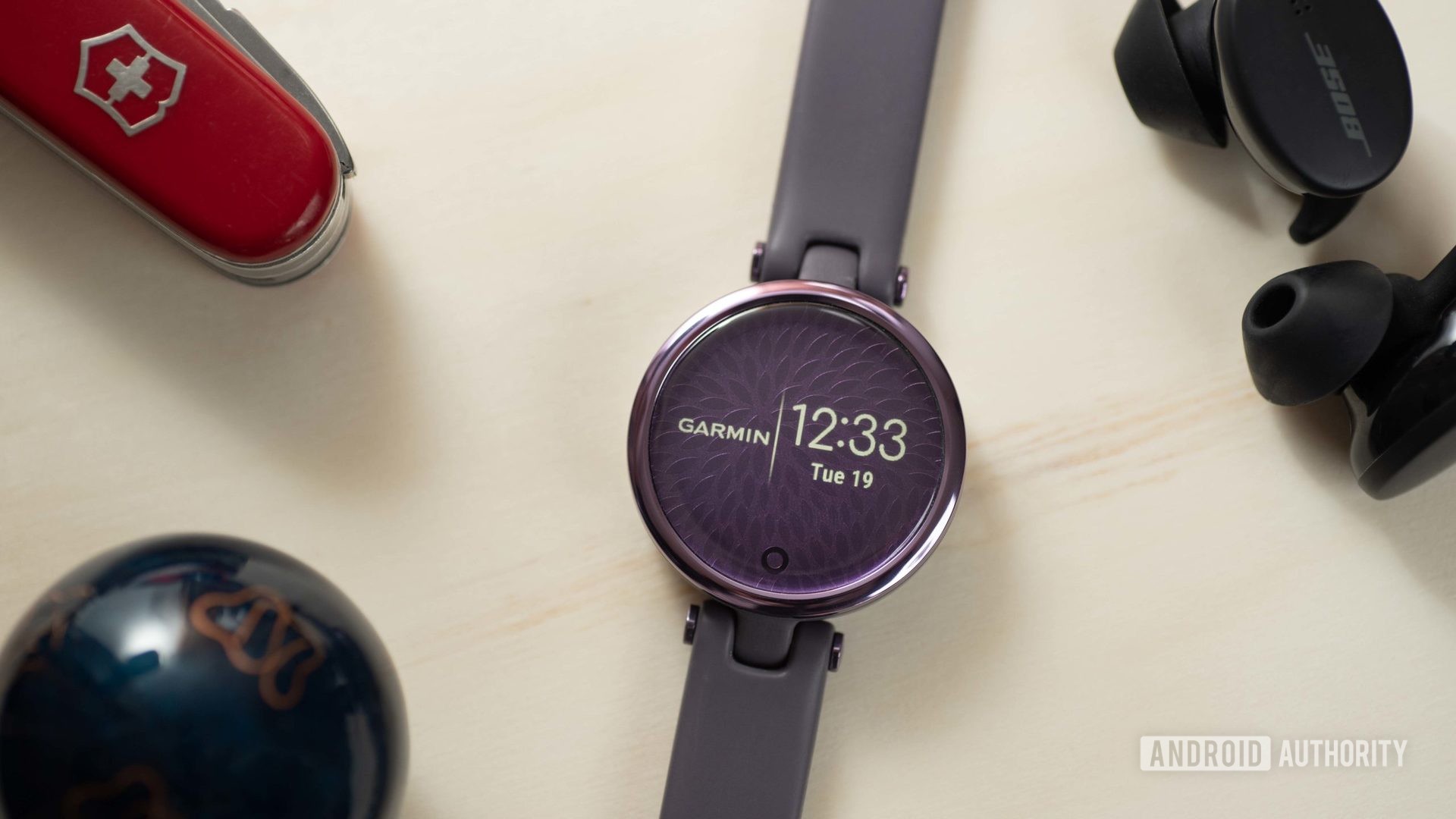
This is the company’s smallest smartwatch to date, measuring just 34mm. Regardless of which model you fancy, the 14mm-wide watch band accommodates wrist circumferences of 110-175mm. As someone with narrow, thin wrists, this band is just right. The holders manage the strap tail well.
More fashion-conscious consumers will gravitate towards the pricier Garmin Lily Classic Edition. It includes an Italian leather band, stainless steel bezel and hardware, and modest lens designs. Garmin trades the leather band for a silicone one with the Sport Edition, and includes aluminum hardware rather than stainless steel. The Garmin Lily Sport features organic, nature-derived lens patterns, while the Classic features a classy X pattern.
The unique display patterns are a bit too eye-catching for my taste. In harsh lighting, they distract my eyes from the monochromatic numbers and letters on the thin-film-transistor (TFT) LCD. This effect is mitigated when you increase the screen’s brightness. However, doing so is at the expense of battery life. Both Garmin Lily variants feature Gorilla Glass 3 to protect the 25.4 x 21.3mm display.
There’s a single touch-sensitive button on the bottom of the display, which acts as a back button. You also use this to wake the display. We’ve had issues with the Lily’s display not waking up right away when lifting our wrists, meaning tapping that button is the only way to wake the device. It can be annoying.
Additionally, both leather and silicone watch bands feel nice to the touch and comfortable on the wrist. This watch uses Garmin’s proprietary “t-bar” lugs, which require a special tool to be replaced. This tool only comes with replacement watch bands, which you can only buy from Garmin.com. Therefore, those hoping to buy a cheaper third-party strap from Amazon will be disappointed.
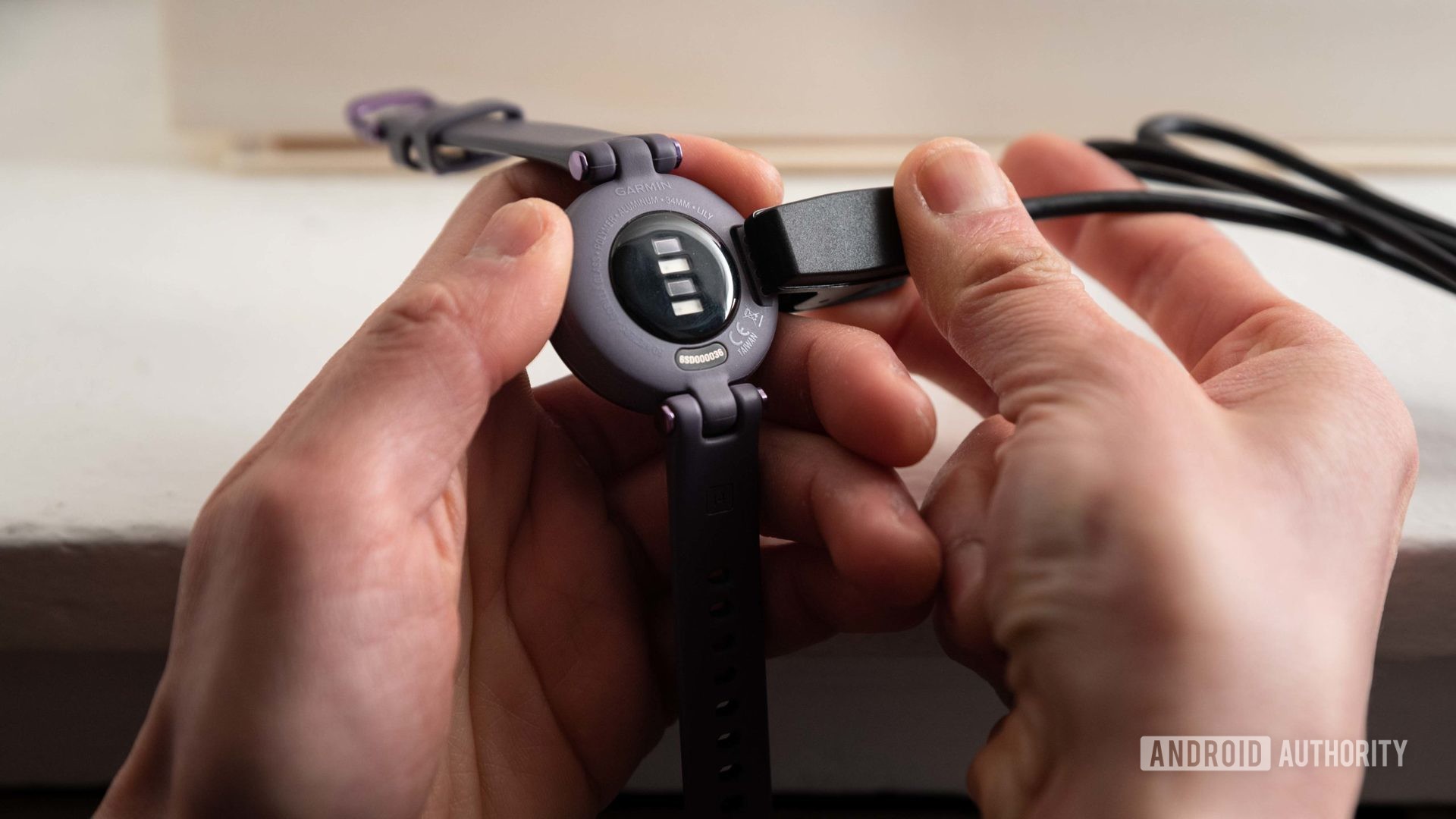
Despite its compact size, Garmin claims the Lily can last up to five days on a single charge. We’ve found that to be mostly accurate. Nevertheless, you’ll need to be a little reserved with your usage. Our Garmin Lily review units have lasted on average 4-5 days with normal to heavy usage. Also, expect decreased battery life if you keep SpO2 monitoring turned on during sleep tracking.
Garmin has used the same charging port and cable on most of its wearables for years. The Lily ships with an older cable, which needs to be clipped on the side of the device for charging. It’s not a big deal, but those with multiple Garmin chargers lying around their house won’t be able to use them with the Lily.
Garmin Lily review: Fitness and health tracking
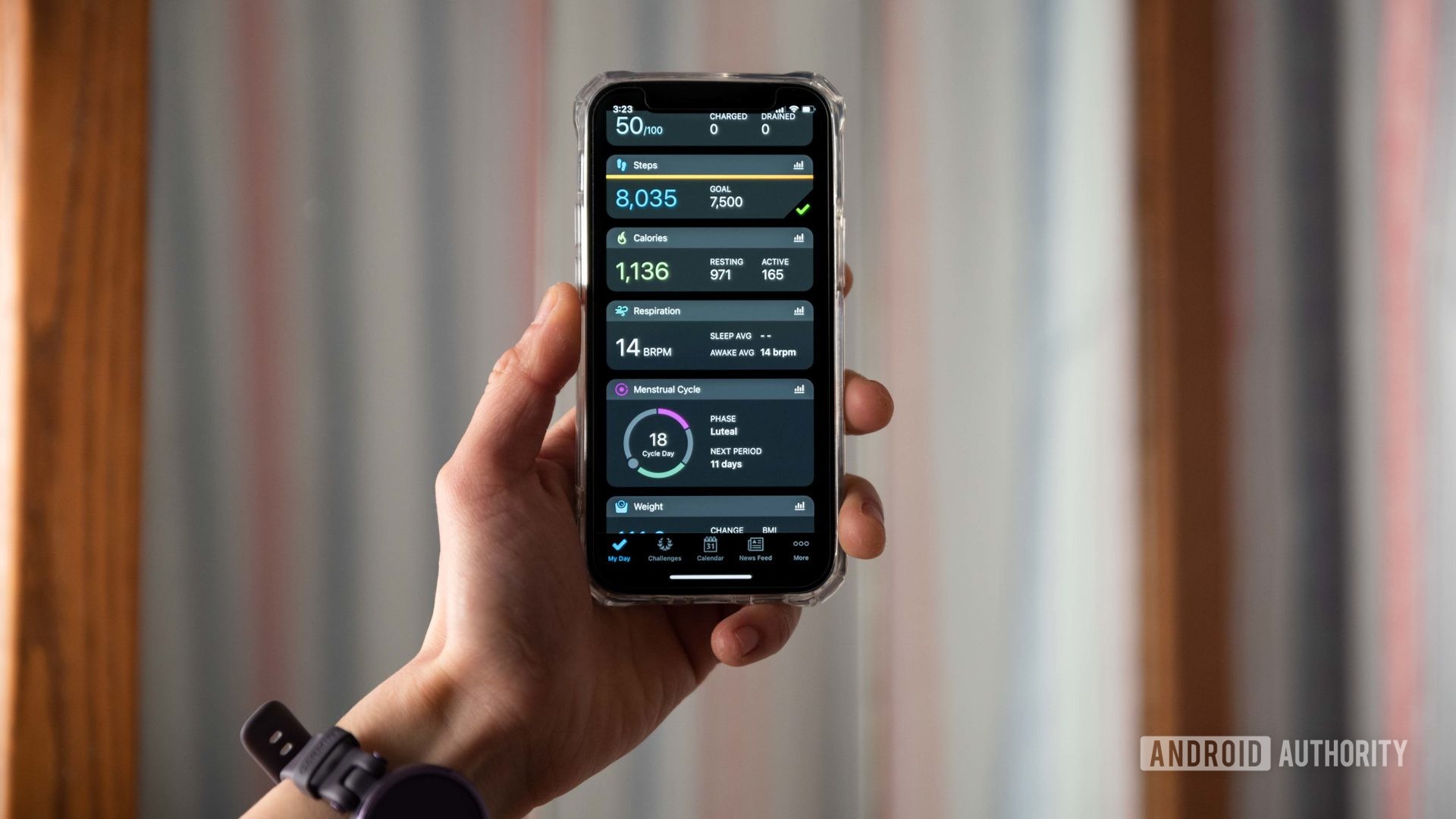
Wellness is the name of the Garmin Lily game, and the watch supports a variety of fitness tracking metrics. Garmin highlights two main features of the Lily: menstrual and pregnancy tracking, which go hand in hand. The former is familiar in the world of wearables, and even smartphone apps. The latter, on the other hand, can be found in other Garmin watches like the Venu lineup. It’s good for women who want to log specific pregnancy information like blood glucose levels, and when their child-to-be is in motion.
The Garmin Connect app’s Menstrual Cycle module is easy to understand at a glance. It immediately displays a divided, color-coded ring communicating information on fertility, period, and ovulation. Its Cycle Calendar follows the same color-coding and depicts predicted period and ovulation dates too.
You can add as much or as little information as you’d like, ranging from hormonal contraceptives to period duration and more. If you’re not interested in cycle tracking, you can disable it too. Naturally, the more information you share with your Garmin Lily and its associated app, the more accurate its predictions are.
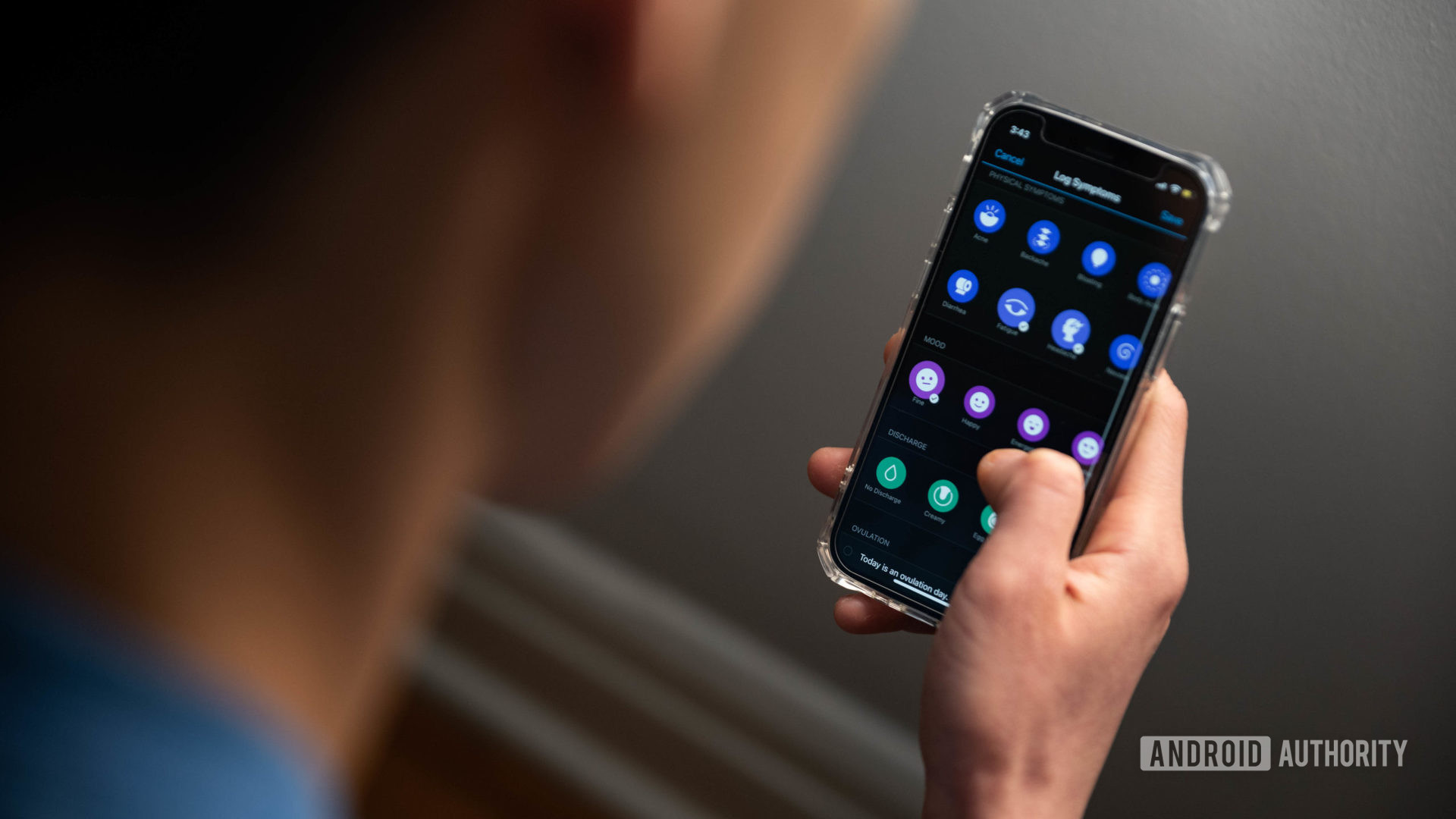
There are two ways to input your menstrual cycle: directly from the Garmin Lily or via the Garmin Connect app on your smartphone. The app log breaks symptoms down into a few groups, which can be toggled from the settings menu of the Women’s Health section. Within each category, you have an array of options to choose from. However, I wish you could add your own symptoms since every woman’s menstrual cycle varies. For instance, the app allows recording a headache, but not dizziness. Though, you can always add more symptoms in the Notes section.
Garmin also includes easy-to-understand information that pertains to menstrual cycles. This is great for women who may not be familiar with the various phases of their cycle (e.g., menstruation, follicular, ovulation, and luteal). It even breaks down the phases and offers a brief description of what to expect during each one, as well as when it typically occurs.
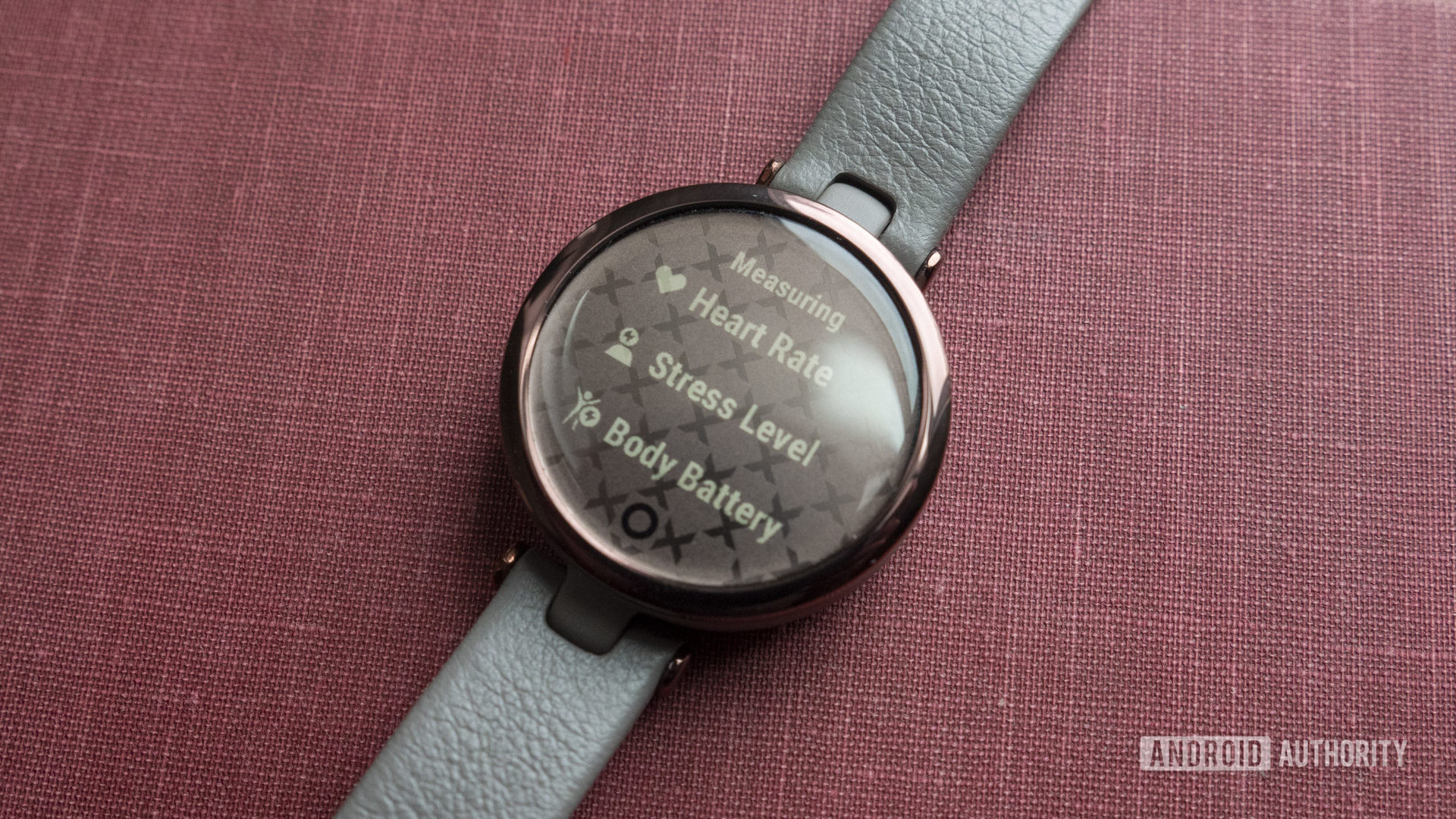
Other fitness features include pulse oximeter measurements (SpO2), stress monitoring, hydration tracking, heart rate tracking, and advanced sleep logging. You volunteer some of the information like hydration, but other things (e.g., heart rate) are recorded automatically.
Information on burned calories can be hidden from the watch face and mobile app dashboard, which women who struggle with eating disorders may prefer. You can easily disable things like heart rate tracking from the watch’s touchscreen. For a detailed analysis of Garmin’s SpO2 tracking, Body Battery, and breathwork features, read our Garmin Venu review.
However, the watch will still track your caloric burn unless you disable the heart rate sensor. Once you turn off the heart rate monitor, you can no longer access your VO2 max estimate, intensity minutes, and all-day stress readouts.
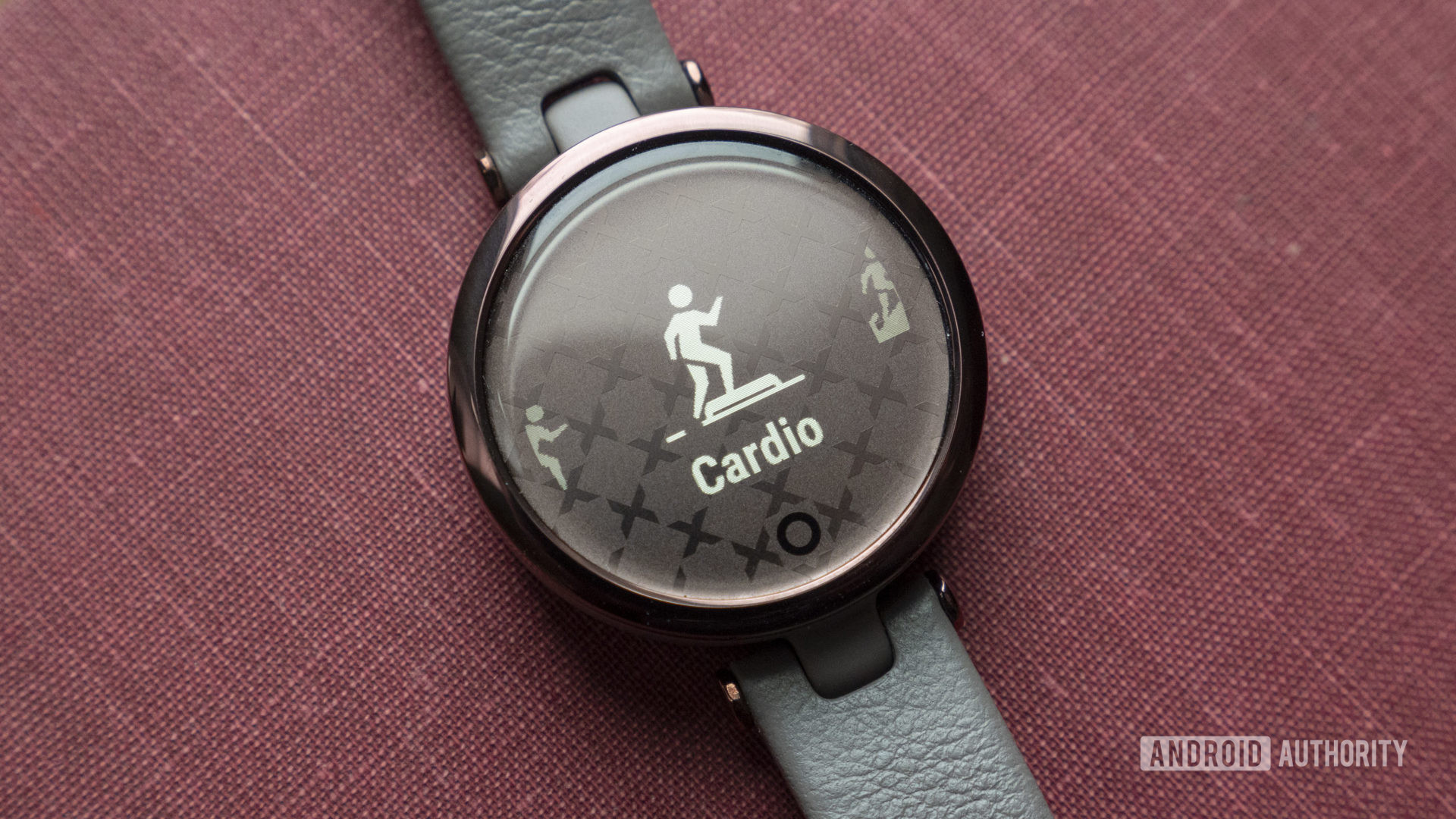
The Garmin Lily supports 15 preset activity profiles. Seven of these can be stored on the watch simultaneously. You can swap out activities in the Garmin Connect app at any time.
The Garmin Lily doesn’t have an integrated GPS system. Instead, uses your smartphone’s GPS to track fine movement. We tested the Lily connected to a Google Pixel 5 on outdoor walks and runs and didn’t experience any connectivity issues throughout the testing period.
As mentioned, the Garmin Lily features an optical heart rate monitor for tracking resting heart rate throughout the day and active heart rate data during exercises. Below, you can see a roughly hour-long interval run on the treadmill with the Lily (yellow) compared to the Wahoo Tickr X chest strap (purple).

Overall, the Garmin Lily’s heart rate readings matched up quite well against the chest strap. Both devices picked up on major peaks and valleys during the run. You can see the Lily was a little quick to rise at around the 29-minute mark. However, it quickly got back on track by minute 32. Interval runs are tough for fitness trackers, and the Garmin Lily appears to have handled them well.

Sleep tracking is one of the Garmin Lily’s strong suits. It tracks your stages (deep, light, and REM), each time you wake up at night, as well as your respiration rate and SpO2 readings. Sleep stage tracking lined up well with the pricier Fitbit Sense. While SpO2 tracking at night won’t lead to Garmin uncovering any sleep apnea signs like Fitbit or Withings devices can, it’s still a useful metric when determining how well you’re resting every night.
Garmin Lily review: Smartwatch features
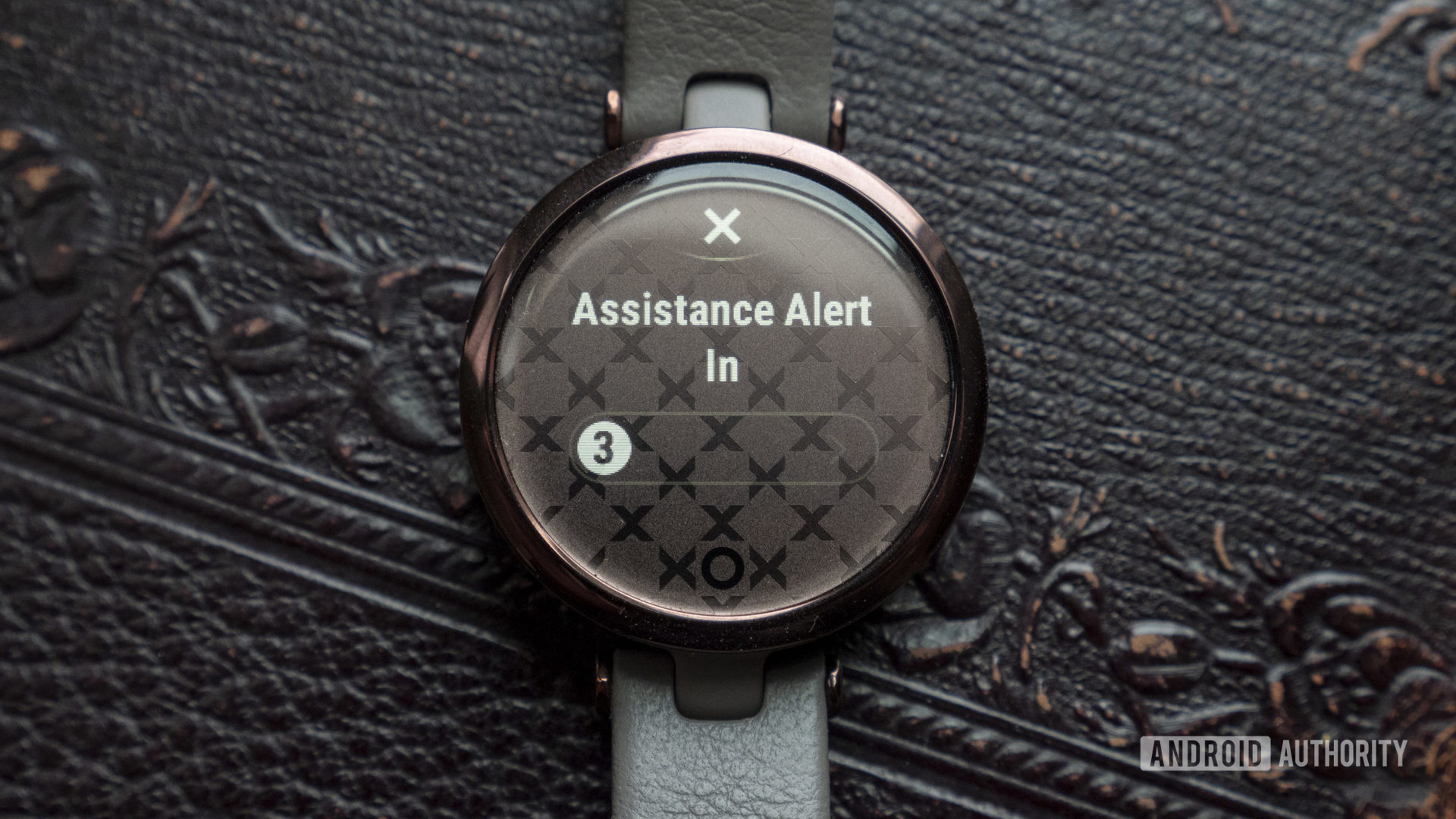
We’ve been referring to the Garmin Lily as a smartwatch, but it’s only that in the most basic sense of the word. The watch can mirror your smartphone notifications, and Android users can even reply to texts from the watch with canned responses. Additionally, the Lily can show calendar events, display the weather, and control your phone’s music (though there’s no onboard music storage). Unfortunately, the Garmin Lily does not support Garmin Pay.
Importantly, the Garmin Lily comes with the company’s incident detection feature, allowing you to notify emergency contacts manually from the watch or automatically if the device senses a sudden deceleration or impact. The Lily uses Garmin LiveTrack to monitor your real-time location during activities. If it senses an incident and the watch is connected to your smartphone, it will notify your preset emergency contacts of your current location. This will undoubtedly be a key feature for women who are trepidatious about their safety when running outdoors.
There are 12 watch face options preinstalled on the Lily. The kicker is that it’s not compatible with Garmin’s Connect IQ software. This means you can’t download third-party watch faces or apps to the device. Translation: what you see is what you get. Many of the watch faces are customizable, however.
Garmin Lily specs
| Garmin Lily | |
|---|---|
Display | 25.4 x 21.3mm grayscale touchscreen TFT LCD 240 x 201 resolution Corning Gorilla Glass 3 |
Materials | Case: stainless steel or aluminum, fiber-reinforced polymer Strap: leather or silicone |
Dimensions and weight | 34.5 x 34.5 x 10.15mm Fits wrists with a circumference of 110-175mm 24g |
Battery | Up to 5 days |
Durability | 5ATM |
Storage | 7 timed activities, 14 days of activity tracking data |
Connect IQ compatibility | No |
Garmin Pay | No |
Sensors | Garmin Elevate heart rate sensor Connected GPS Accelerometer Ambient light sensor Pulse oximeter |
Connectivity | Bluetooth Android and iPhone compatible |
Garmin Lily price and competition
The Garmin Lily Sport Edition launched at $199, while the Garmin Lily Classic Edition $249. Now that the Lily is a few years old, you can regularly find both guises of the device on sale below these figures, though. Both are offered in three colorways.
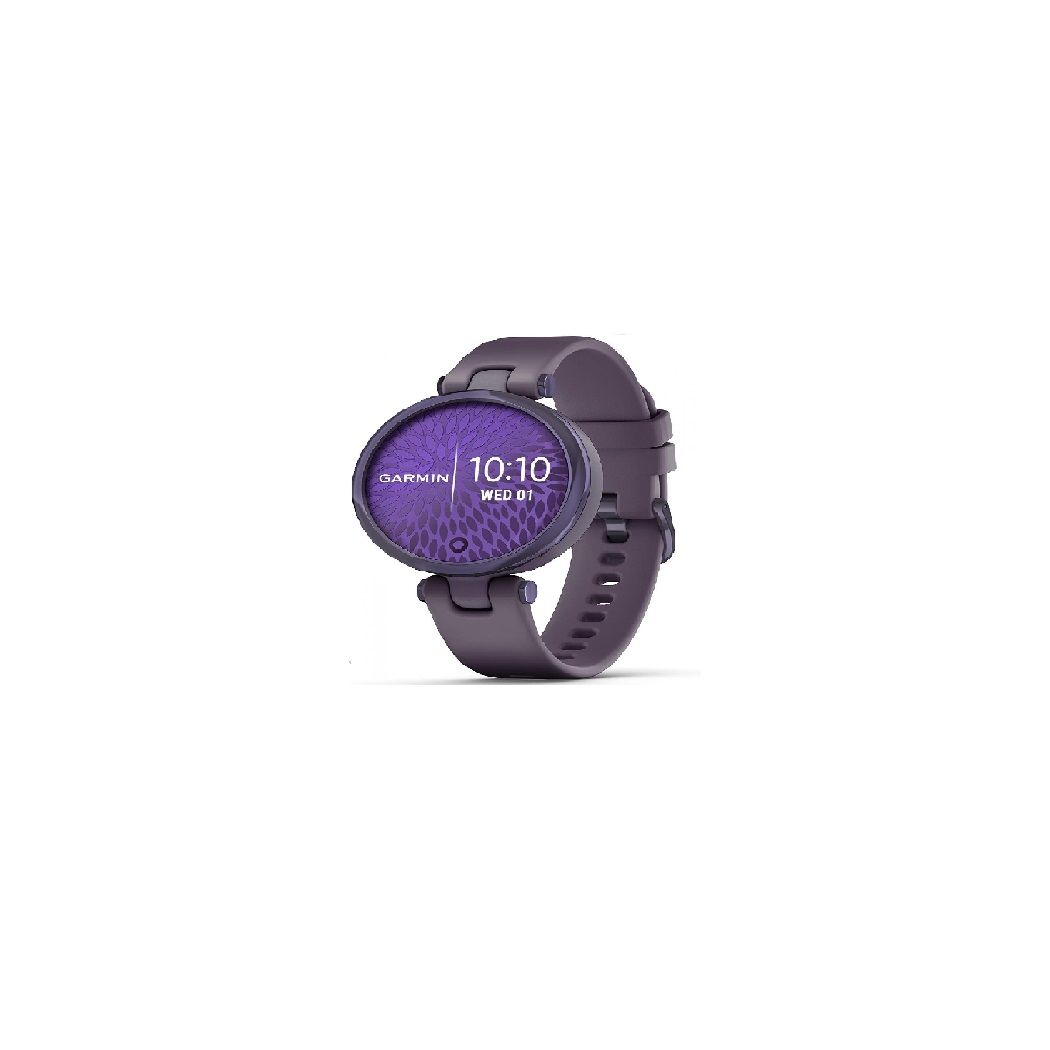
In the fitness world, there isn’t a 1:1 Garmin Lily competitor. It’s really the only fitness-focused smartwatch that is this geared toward women. However, many other unisex devices offer similar or even more features than the Lily.
One of these comes from Garmin’s own stable. The vivomove Sport ($179 at Amazon) offers a more subdued hybrid watch aesthetic. It’s cheaper than the Lily and offers a great battery life, but it also lacks smartwatch features you’ll find in more premium Garmin products.
If you prefer the fitness tracker form factor, the Fitbit Charge 5 ($134 at Amazon) is another compact alternative, complete with an OLED display and more health sensors. It also one-ups the Lily with built-in GPS and Fitbit Pay support. That said, Garmin devices are best suited to specific types of users. Read our Fitbit vs Garmin comparison to see which ecosystem may be a better fit for you.
For a genuine smartwatch experience, the Garmin Venu 2S ($355 at Amazon) and smaller Samsung Galaxy Watch 5 ($162.57 at Amazon) are viable options. The Venu 2S, with its 1.1-inch display, is another option for smaller wrists, although it’s much pricier. The Galaxy Watch 5 would make for a more complete wearable offering but falls short in terms of battery life. Apple users may opt for the Apple Watch SE (2022) ($269.99 at Amazon) which lacks health tracking features but has all the smartwatch kits of the more premium Series 8.
Finally, the Withings ScanWatch ($299 at Amazon) is among the best devices to monitor your heart health available, although wrapped in a less petite package.
Garmin Lily review: The verdict
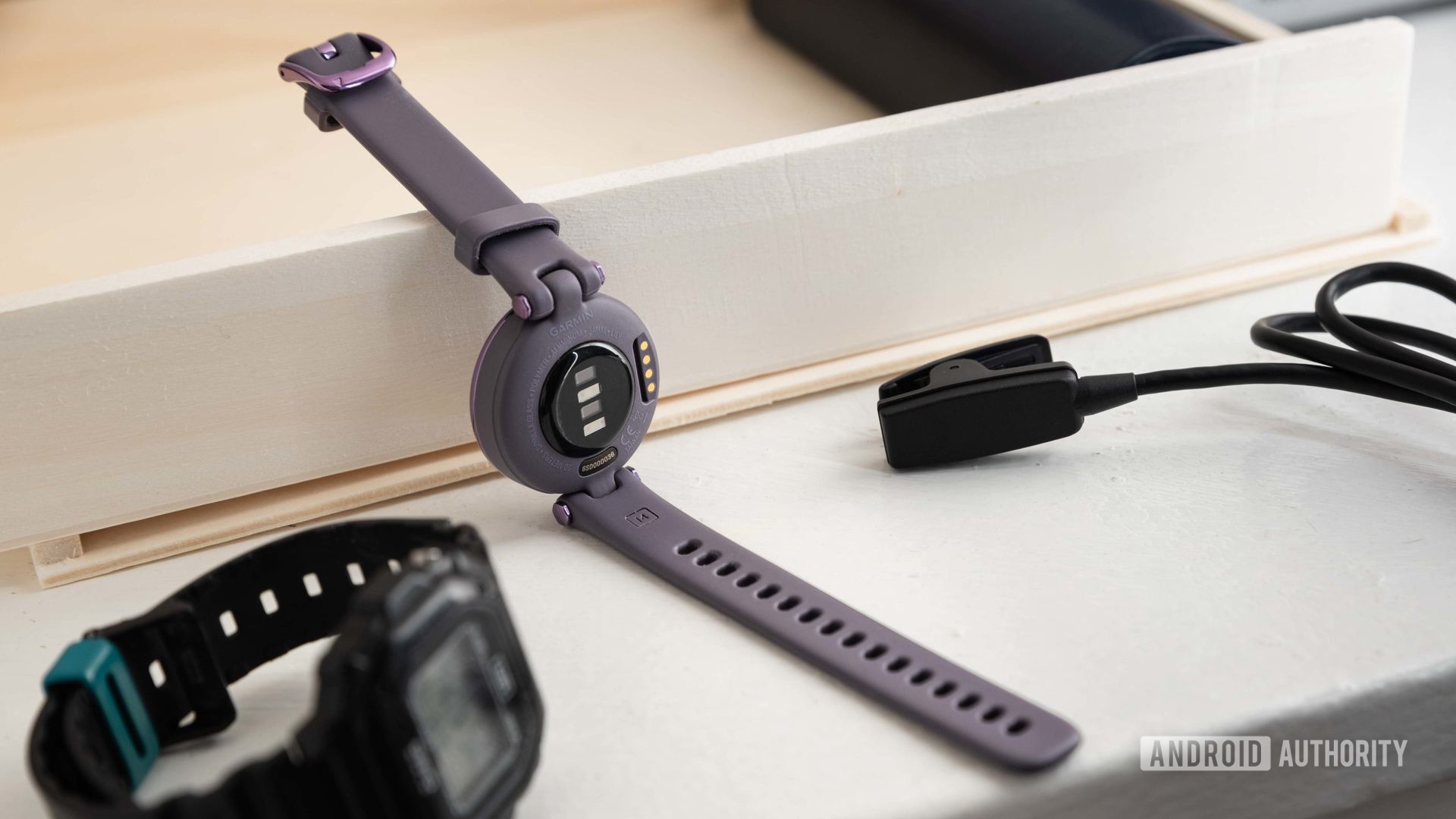
At launch, Garmin said the Lily was the “small and fashionable smartwatch women have been waiting for.” But was that really the case? We have mixed feelings.
On one hand, the Garmin Lily delivers on the important features. It’s a good overall fitness and health tracker, and the menstrual cycle and pregnancy tracking features are certainly useful for Garmin’s target demographic. Really, aside from the issues we have with the display and design, the Lily is an overall good (and basic) fitness tracker.
But the “smartwatch women have been waiting for?” With that phrasing, we would have really liked to see something more capable. Something that doesn’t lose out on features (Garmin Pay, built-in GPS, etc.) in lieu of a pretty design. We would have liked to see a slightly bigger design if it meant Garmin could include more advanced fitness and smartwatch features.
Marketing aside, the Garmin Lily delivers on the core features. It just left us wanting a little bit more. In light of how companies are now using temperature data for detailed cycle tracking, the Lily almost feels outdated. This advanced sensor on the Apple Watch Series 8, for example, weighs heavily in Apple’s favor when comparing Garmin vs Apple devices in terms of women’s health.
The Garmin Lily has a water resistance rating of 5ATM making it safe for swims or the shower.
You can not make or receive phone calls on a Garmin Lily.
The Garmin Lily offers music controls but no onboard music storage.
Yes. you need a phone to set up your device as well as to use connected GPS.
The Garmin Lily does not feature onboard GPS, however, it does support connected GPS tracking.
Thank you for being part of our community. Read our Comment Policy before posting.